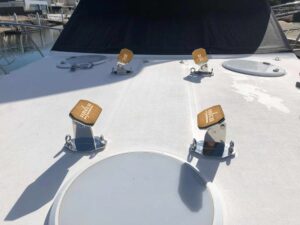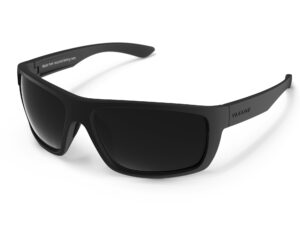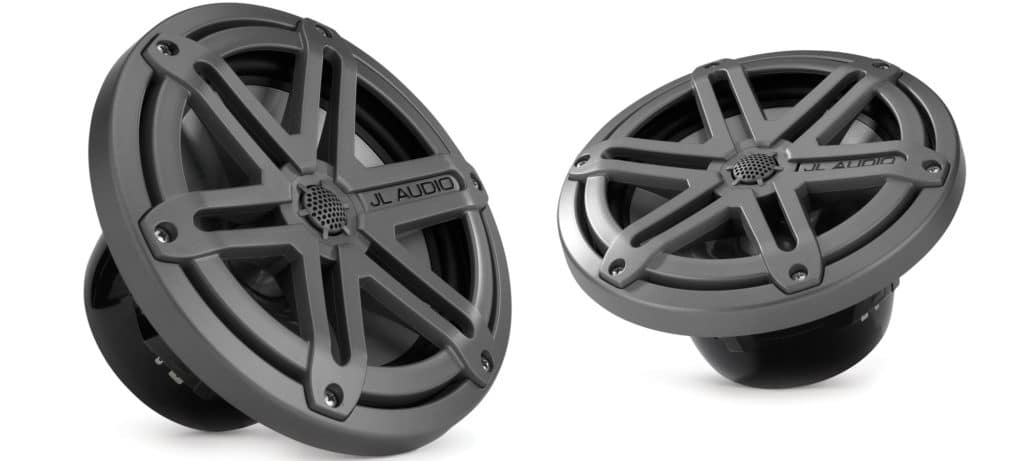
For many sailors, music is as integral to life on the water as the wind and sun, and it can be as important to crew morale as a post-passage celebratory dinner. True, everyone has their own tastes and styles, but today’s marine entertainment systems are versatile enough to accommodate opera buffs belowdecks as classic rock plays in the cockpit. While high-end stereos and related add-ons aren’t technically mandatory sailing kit, they can make life aboard significantly more fun, thanks to the advanced technologies that manufacturers are leveraging to create user-customizable systems that are built to withstand exposure to salt water, sunlight and constant humidity while delivering crisp, rich sound.
Here, then, is a look at the kinds of systems available, as well as the features they offer.
As with all things marine, manufacturers typically market good, better and best offerings. However, customers can usually mix and match components from different product lines (or from different manufacturers).
This equipment starts with a marine-specific control head, one that’s rated as waterproof or water resistant and designed for use in direct sunlight. Typically these have a user interface that’s similar to a car stereo, and that’s not a coincidence, since many marine-stereo manufacturers also build equipment for the automotive and RV markets. The control head is then connected to at least one pair of speakers; bigger systems could also include preamps, subwoofers and multispeaker installations.
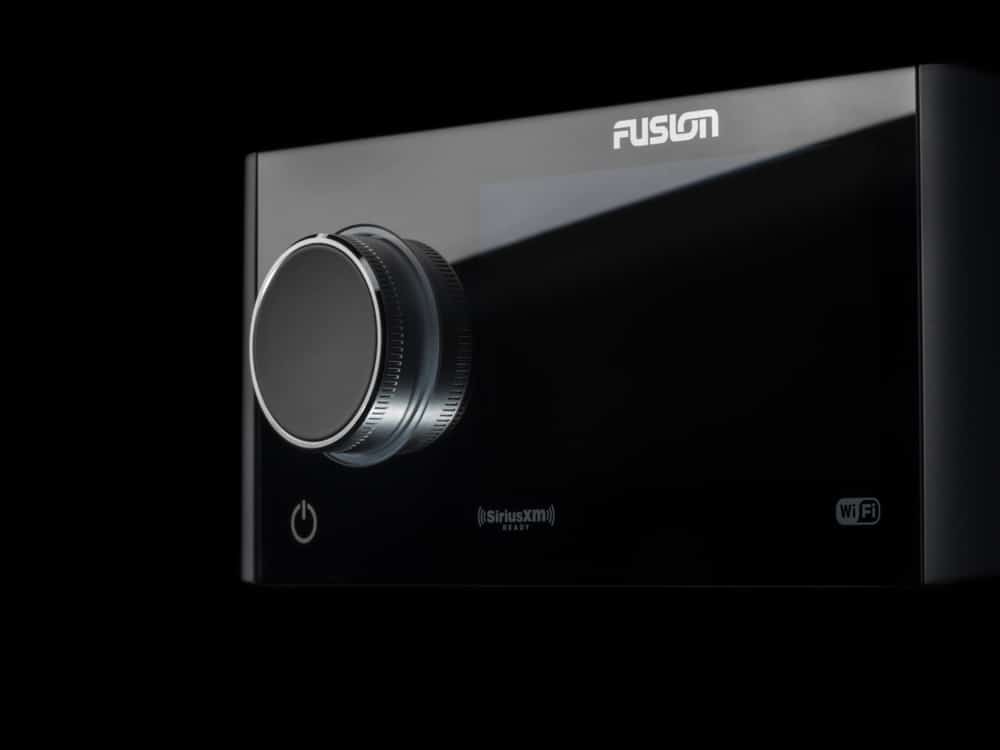
“We start by finding out what the customer is looking for,” says Doug Yamaguchi, who handles marine sales and technical support at Rockford Fosgate. “For example, how many zones do they want, and do they want separate operations in each zone? Also, what kind of music listener are they?”
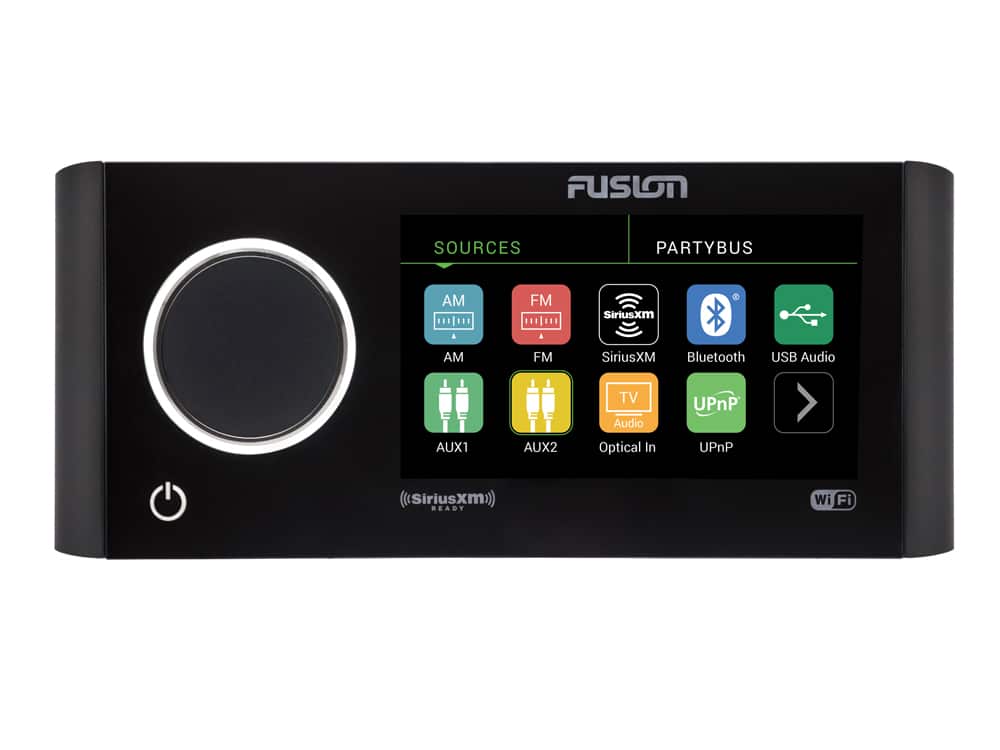
Another important consideration is vessel size, because a pair of speakers and a control head likely offer ample projection for a small pocket cruiser but could get lost aboard a 50-footer.
“On a large sailing vessel, you’ll have at least one zone above deck, with two to four coaxial speakers and a subwoofer,” says Ora Freeman, JL Audio’s national sales manager. He notes that his team prefers to spec subwoofers for extra bass whenever possible. “Belowdecks, in the saloon, you might have another pair of coaxial speakers and another subwoofer, and you might want a third zone with a pair of speakers up in the bow.”
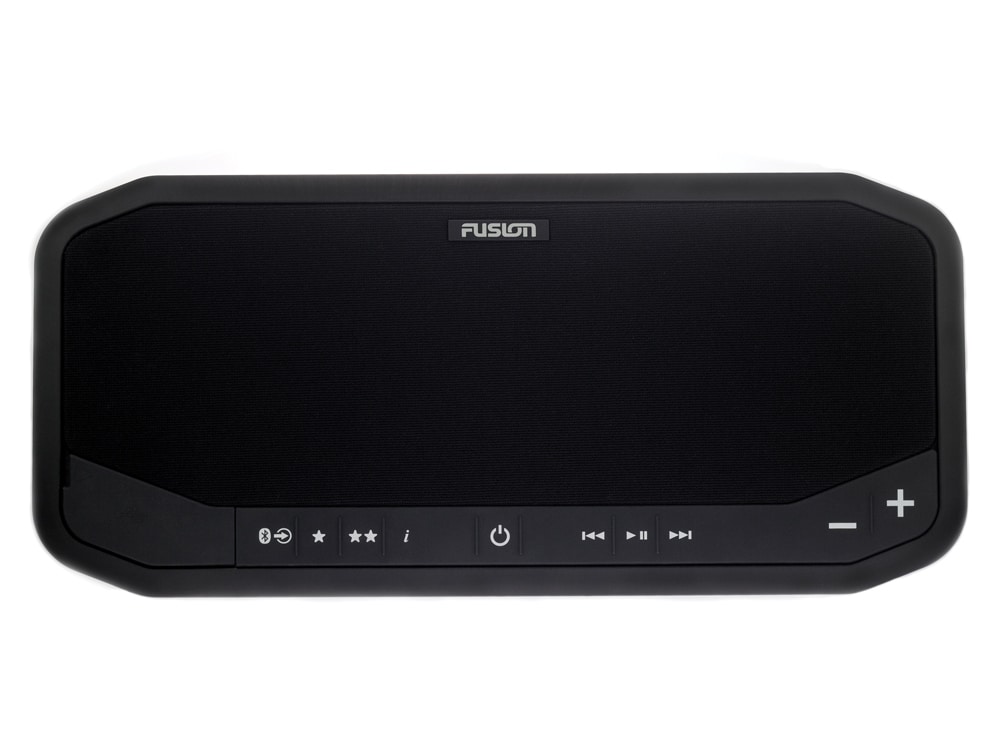
Freeman says it’s important to select a control head that can support multiple audio zones — say, Clapton in the cockpit and Wagner in the saloon. “One source unit can control all of this gear.”
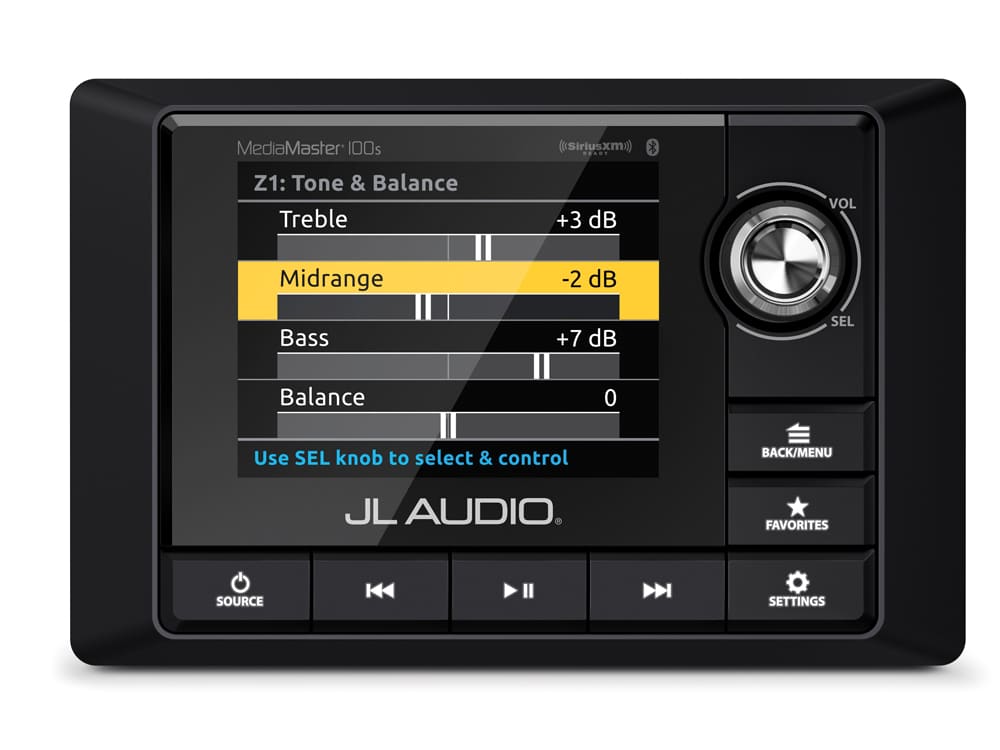
In addition to bass, volume and sound quality, other important considerations include your intended audio source, be it a hard-wired CD/DVD player, a wireless hard drive or an online streaming source; the resolution of the files that you’ll be playing; and your intended pathway from the audio source to the control head (see “Wires not Included,” page 98). In all cases, the marine-entertainment market stands ready to supply user-customized systems and equipment that suits all budgets and waterlines.
As with all electronics, the trickle-down effect has enabled manufacturers to use microprocessors to create more capable control heads, which have evolved at a faster clip than marine-specific speakers, amps or subwoofers. For consumers, the great news is that a contemporary midlevel control head provides better sound and source flexibility than high-end offerings from a decade ago. In fact, today’s high-end marine control heads are starting to rival some at-home stereos, thanks to modern technologies that now include wireless connectivity and updates, touch-screen interfaces, voltage monitoring, electronically displayed album art, digital signal processing, loudness curves and speaker profiling. “Fidelity has to be of the highest quality,” says Freeman. “If you send a lower-quality signal to an amp, it will only amplify it.”
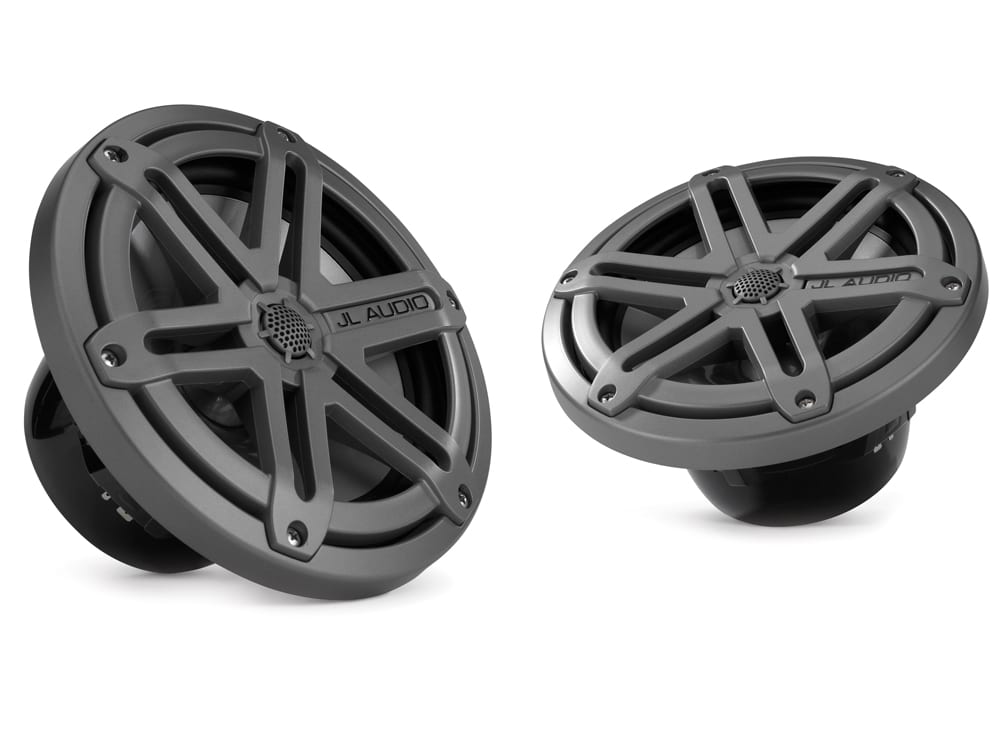
The result is that today’s higher-end control heads have essentially become miniaturized, marinized computers. For example, Fusion Entertainment’s new Apollo-series head units, the RA770 and the SRX400, use 32-bit processors, and are currently the only stereos that feature Wi-Fi connectivity, including built-in access points. This allows them to join existing wireless local area networks or serve as the network’s wireless access point.
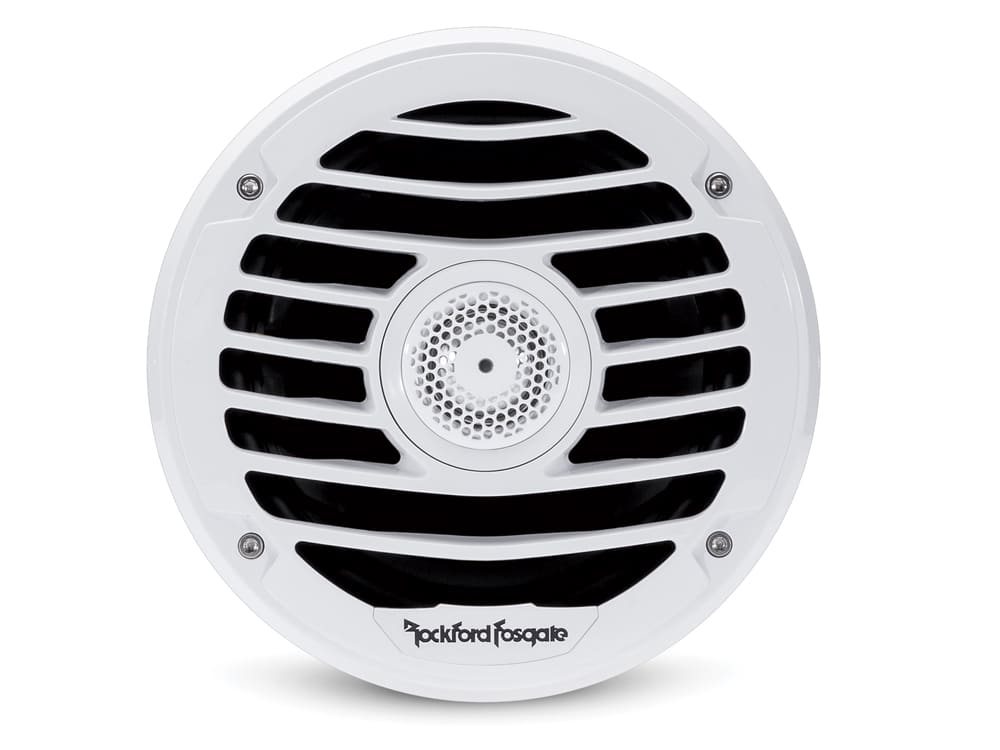
Fusion Apollo systems also support Apple’s AirPlay, so users can stream virtually any audio source to multispeaker stereo systems. Apollo also features a touch-screen interface and so-called PartyBus functionality, allowing users to play the same synced music across all zones, or different music sources in individual areas of the boat.
“Apple initially thought CarPlay would work,” says Chris Baird, Fusion Entertainment’s managing director, referring to Apple’s more streamlined audio-connectivity solution that lets users stream compressed files, such as MP3s. “But we convinced them that a good marine stereo is like a home environment.” This, in turn, opens the door for audiophiles to enjoy high resolution.
“You can send high-quality music over Bluetooth, but Wi-Fi increases the audio quality and range,” says Baird. “Bluetooth can cut out if someone’s body is blocking the signal, but this isn’t a problem with Wi-Fi.”
While AirPlay and Universal Plug and Play (a networking protocol that enables Bluetooth-like discoverability and pairing among third-party devices) protocols make it easy to feed a high-quality wireless signal to Apollo control heads, Apollo systems also boast digital signal processing, which customizes the control head’s outgoing signal to match the performance profiles of the system’s other components.
“DSP measures the music before it goes to the speakers, looking for peaks that could clip and damage the speakers,” says Graham Brain, Fusion’s engineering manager. “It rounds off and stops the distortion.” Apollo owners can use the Fusion-Link app (both Android and Apple friendly) to configure their DSP profiles by specifying the number of onboard zones, where these zones are located, and the number and type (model number) of the speakers in each zone, as well as any subwoofers or amplifiers involved in the installation.
“Apollo adjusts the signal all the way to the speaker to ensure the right frequency and to properly match the environment,” says Baird.
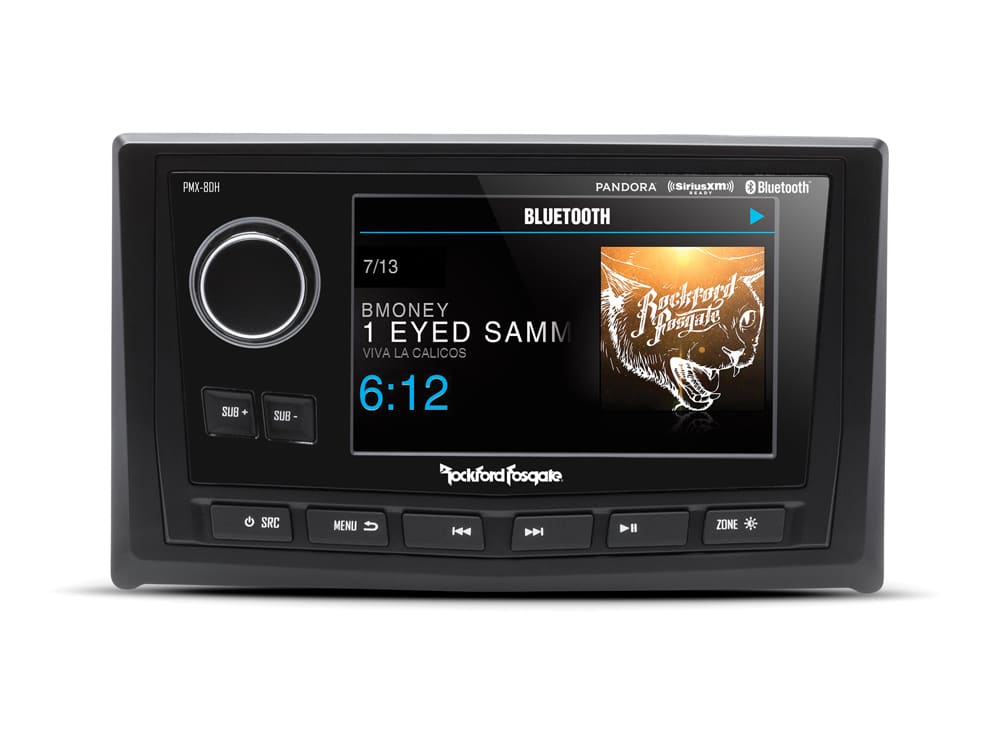
Additionally, Apollo-series control heads apply loudness curves and source-level matching to their outgoing signals. “When you’re on Level 5 volume, we add more bass and treble, but as you go up in volume, the bass and the treble go down,” says Brain. “You wouldn’t want all that bass; it flattens out the sound.”
Also, as anyone who has ever jumped between different audio sources, such as AM/FM, CD player or SiriusXM, on a car stereo knows, there can be big volume swings. Here, source-level matching “makes it so the volume coming out of the speakers is the same,” says Baird. “The user doesn’t have to turn it up or down” as they jump between channels, stations or smartphones.
Control, of course, is another important consideration, especially for owners of larger boats with multiple zones that are driven by a single belowdecks control head. Here, Bluetooth, Wi-Fi and other wireless connections allow users to control their systems via their tethered smartphone or watch, but proprietary remote controls also are often available. “They look just like the source unit, so customers don’t need to relearn how to operate the unit,” says Rockford Fosgate’s Yamaguchi.
Audio inputs are another area of recent evolution. Rather than built-in CD players, today’s most commonly used audio sources include online streaming (Pandora or Spotify) and satellite radio (SiriusXM). While satellite-radio services typically require their own black-box receivers, most modern control heads allow users to share audio from their paired wireless device (either from its solid-state hard drive or from a streaming-service app) with the control head via Bluetooth or Wi-Fi, and additional inputs, such as USB ports.
As previously mentioned, digital control heads have been on steeper evolutionary curves than amps, speakers and subwoofers, which are significantly more analog in nature. However, there are speakers that are specifically designed for DSP-enabled control heads that are on the near horizon (as are DSP- and Wi-Fi-enabled control heads from other manufacturers). Moreover, today’s marine-specific speakers are built from durable materials that come with environmental ratings and last significantly longer than offerings from even a decade ago.
“We manufacture our equipment to withstand 2,000 hours of salt, fog, UV exposure, heat and humidity testing,” says Freeman, describing JL Audio’s environmental testing process. “We expose the equipment to some awful conditions. We’re based in South Florida, and we want to make long-lasting products for our neighbors.”
The result of all of this evolution, testing, product development and feature-set integration, of course, is significantly better-sounding, user-customizable marine-entertainment systems. And while no marine-electronics equipment is inexpensive, odds are good that a new stereo system will yield a disproportionately higher return of smiles and good times afloat — dollar for dollar — than many other upgrades, thus nudging this investment that much closer to the mandatory-cruising-gear category, especially for anyone who loves great music and a properly trimmed set of sails.
David Schmidt is CW’s electronics editor.
Entertainment System Manufacturers
- Clarion, 800-347-8667; from $200
- Fusion Entertainment, 623-580-9000; from $180
- JL Audio, 954-443-1100; from $230
- Rockford Fosgate, 800-669-9899; from $150
- Wet Sounds, 877-938-7757; from $700
Wires not Included
When it comes to streaming audio, not all wireless sources are created equally, and it’s worth considering the two most popular standards, namely Bluetooth and Wi-Fi, using technology such as Apple’s proprietary AirPlay streaming. While Bluetooth is the most often used way of easily connecting, for example, a smartphone with a speaker or stereo, it operates on the 2.4-gigahertz frequency and has a relatively narrow bandwidth and a maximum line-of-sight range of about 30 feet.
In comparison, Wi-Fi networks typically operate on 2.4-, 3.6- or 5-gigahertz frequencies, and have considerably higher bandwidths and maximum ranges of about 300 feet. However, they require a third-party wireless router (commonly available, from $70) and a wireless local area network to pair, for example, a smartphone with a stereo control head. (Alternatively, systems with built-in Wi-Fi access points, such as Fusion’s Apollo series, eliminate the need for a router and wireless network.)
While maintaining a router and wireless network requires some additional cost and low-level administrative complexity, it allows for larger, higher-resolution audio files to be shared, which is music to the ears of audiophiles who demand so-called lossless, or uncompressed, audio files.
Determining the right wireless option for your boat should depend on the quality (or size) of your audio source files, what wireless network exists or can be added, and how seriously you take your music quality.

